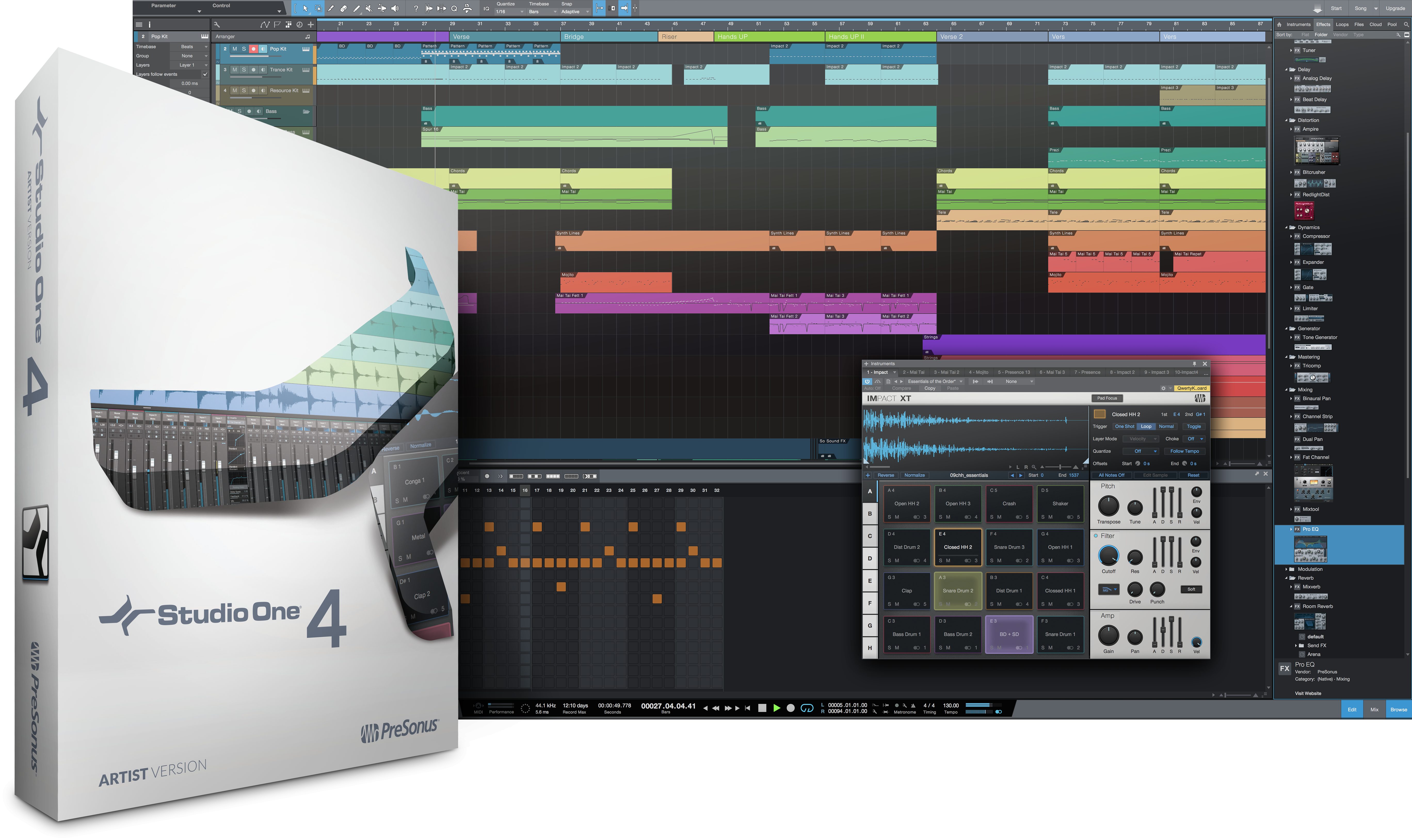Studio One 4 Bounce
There are several people who have asked how you can export a MIDI file from Studio One as Standard MIDI File - Type 0 (SMF-0). There are a few reasons that one might need to do this.
- You play live with an external sequencer controlling your synths and it's not logistically feasible to use your computer (Figure 1).
- You play with just a workstation and want the internal sequencer to play your songs with all your onboard sounds in the correct places (again without use of your computer).
- You create Standard MIDI Files for other people to use (Commercial or Public).
- You want to be able to use the MIDI file in another DAW and use the General MIDI (GM) sounds in that DAW (Reason, Cubase, etc.)
Izotope the t pain effects bundle mac. There may be other reasons I'm not aware of, but these are the biggest ones.
The short answer to this question of how to export SMF-0's is..you can't. Since Studio One does not use MIDI as it is currently known, it doesn't store Program Changes within the MIDI file itself. It stores that information within the actual Song file (Figure 2).

How To Export MIDI From Studio One To Standard MIDI Files
Studio One 4 Bounce Track
Presonus Studio One 4 Crack as the name implies, multi-instrument, lets you stack multiple synths and instruments on a single instrument recode and track, play and edit them like a single instrument. New in Studio One 4.5.1 ( Studio One 4 Crack PRO ). May 23, 2019 On Studio One 4.5 when using 'Bounce Selection' and 'Bounce to a new track' on an audio event it deletes it.
How To Export MIDI From Studio One To Standard MIDI Files. When you export a MIDI file of all the tracks you've created, it's only providing you with the notes and some basic control change information. Dec 05, 2015 50+ videos Play all Mix - How to Bounce In Place in Studio One 3 YouTube; Studio One 104: Workflow Essentials - 3. Studio One 4.0 Series Episode 1 Overview - Duration: 22:26. The following tutorial shows the user how to bounce a mix in Studio One 4. CLICK HERE to learn Presonus Studio One 4 one on one with a digital audio professional at OBEDIA. The last stage of the mix procedure is to output a stereo file that can be delivered to clients.
When you export a MIDI file of all the tracks you've created, it's only providing you with the notes and some basic control change information. Studio One can import and read this information but nothing can be written inside the tracks themselves unless it can be written as simple automation (which is how S1 handles these events). For most Studio One users this won’t be an issue since all the information is stored within the Song file; however, if you do find you need this extra functionality, here’s what you do.
The easiest way to work around this is to export your MIDI tracks by highlighting all the tracks of MIDI data that you have in a song (Figure 3),
right-clicking on them and selecting 'Export Parts to MIDI File' from the drop-down menu (Figure 4).
In these cases, simply drag the icon to Applications in order to install it. Once you open the archive, you’ll see the Application icon appear in the same folder.Simply drag this icon to your Applications folder and you’re done.Some applications don’t come in any sort of archive at all; instead, you’ll download the application file directly. How do i install teamviewer on a mac.

This will create a Type-0 MIDI file. You can also just click “Save As” and, from the dropdown menu in the popup box, select MIDI file instead of Song file. It will carry over any CC’s in the file header, but may need some tweaking.
Studio One 4 Bounce 2
Next, take that SMF and import it into another DAW like Logic, Cubase, Ableton Live, etc. This is where you can add any Program Changes and Control Changes necessary for your song. Pretty much any other DAW will allow you to insert this data anywhere within the MIDI tracks. Once that’s done, you can re-save and export your Standard MIDI File to whatever media you wish such as a usb stick, cloud, or floppy disk (Figure 5) and use it properly.
Studio One is still a very powerful DAW and you can do tons with it. Sometimes, however, we need to find little workarounds for whatever DAW we happen to be using.